Valence Electrons In Carbon slidesharedocs
So to find a formal charge for carbon, the formal charge is equal to the number of valence electrons in the free atom, or the number of valence electrons that carbon is supposed to have. We know that carbon is supposed to have four valence electrons, so I could write a four here, and from that, we subtract the number of valence electrons that.
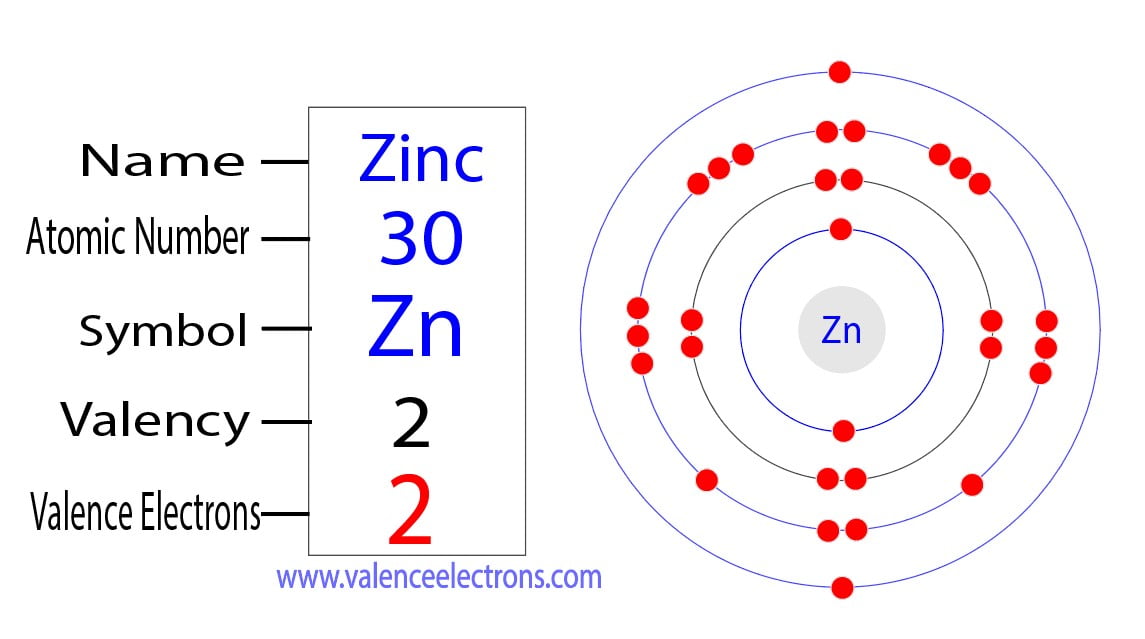
How to Find the Valence Electrons for Carbon(C)?
1. Determine the total number of valence electrons in the molecule or ion. Each hydrogen atom (group 1) has one valence electron, carbon (group 14) has 4 valence electrons, and oxygen (group 16) has 6 valence electrons, for a total of [(2)(1) + 4 + 6] = 12 valence electrons. 2. Arrange the atoms to show specific connections.
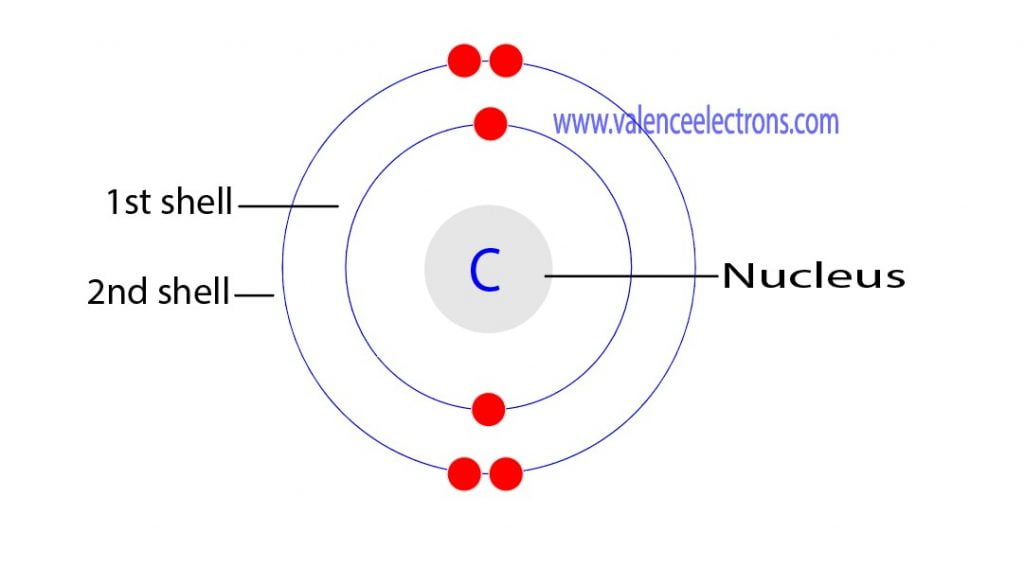
How many protons, neutrons and electrons does carbon have? (2022)
The valence (or valency) of an element is a measure of its combining power with other atoms when it forms chemical compounds or molecules. The concept of valence was developed in the last half of the 19th century and was successful in explaining the molecular structure of many organic compounds. The quest for the underlying causes of valence.

Number of Protons in Carbon JimmyjoysStephens
Four covalent bonds. Carbon has four valence electrons and here a valence of four. Each hydrogen atom has one valence electron and is univalent. In chemistry and physics, valence electrons are electrons in the outermost shell of an atom, and that can participate in the formation of a chemical bond if the outermost shell is not closed.
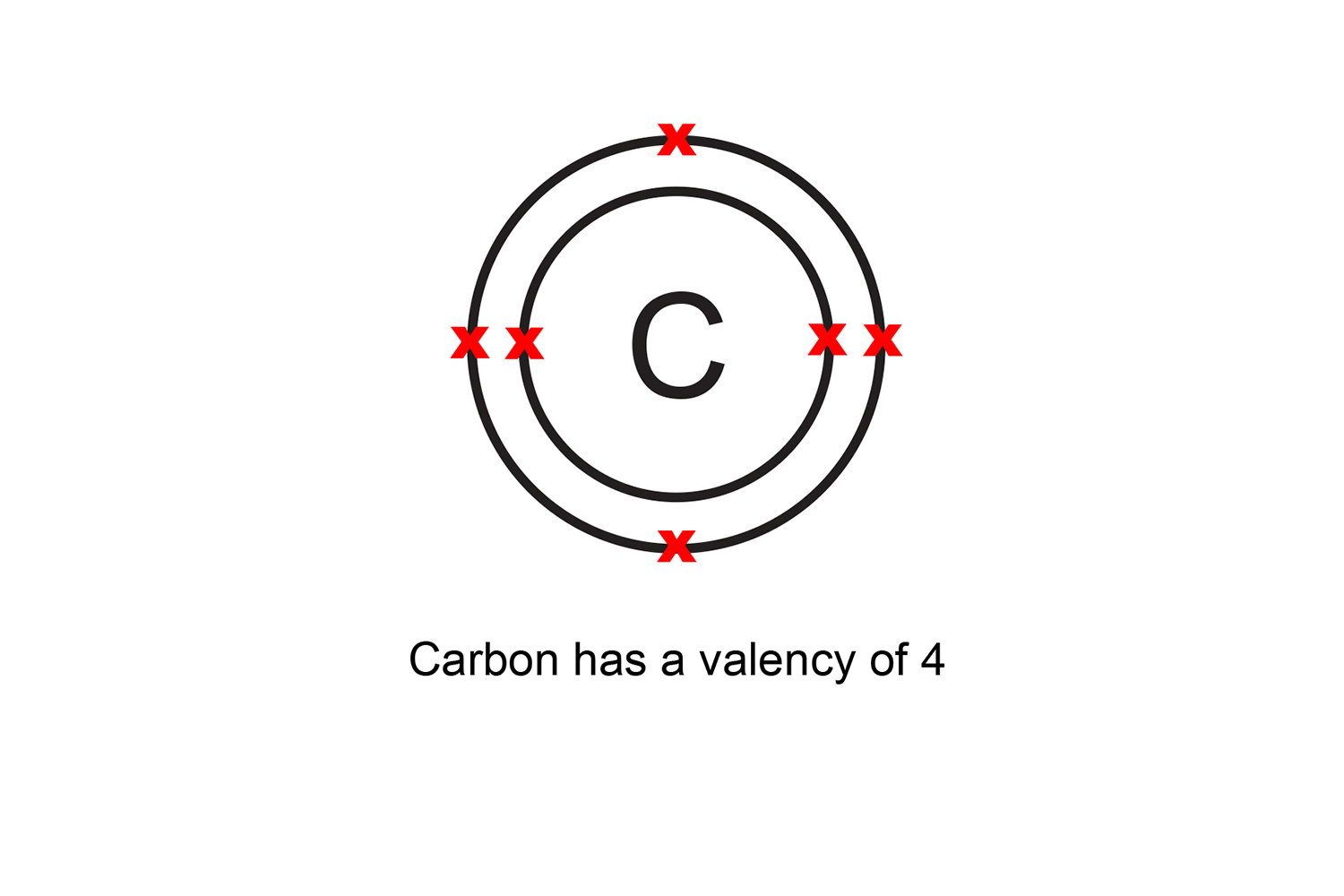
Valency is the number of bonds an atom can make with others
You can see that in the periodic table, carbon is in group 4, so it has 4 valence electrons. How many valence electrons does oxygen have? 6. Oxygen is in group 16 of the periodic table, so as with the other elements in groups 13-18, you can subtract 10 from the group number to find out the number of valence electrons.
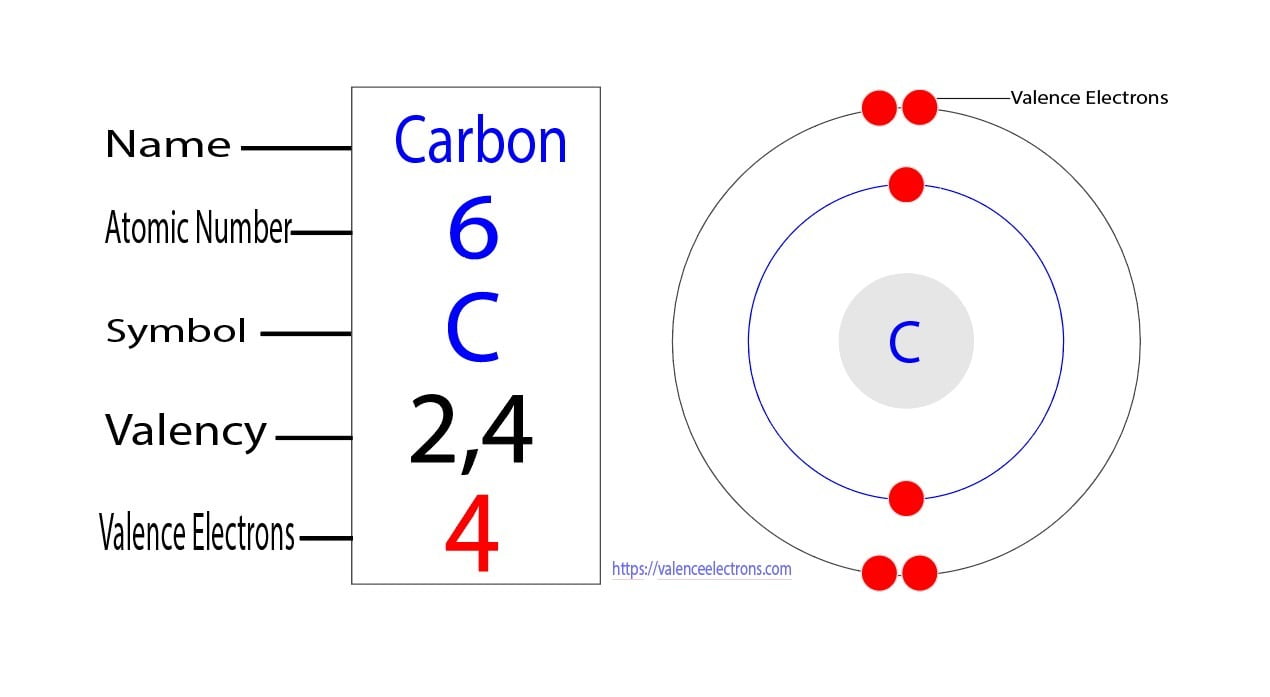
How to Find the Valence Electrons for Carbon(C)?
Valence electrons are the highest energy electrons in an atom and are therefore the most reactive. While inner electrons (those not in the valence shell) typically don't participate in chemical bonding and reactions, valence electrons can be gained, lost, or shared to form chemical bonds.

PPT Chapter 8 lesson 1 Electrons and energy levels PowerPoint Presentation ID2614848
Carbon has 4 valence electrons. Each oxygen has 6 valence electrons. The -2 charge means that there are 2 extra electrons. Total: 4 + (3 × 6) + 2 = 24 electrons. The final answer MUST have this number of electrons‼! Step 2) Attach the atoms to each other using single bonds ("draw the skeleton structure").
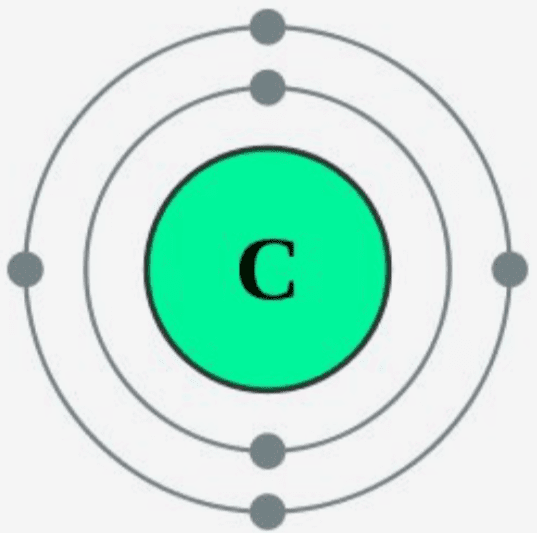
How Many Valence Electrons Does Carbon (C) Have? [Valency of Carbon]
The first shell can hold up to 2 electrons, and the second shell can hold up to 8 electrons. In its neutral state, carbon has 2 electrons in the first shell and 4 electrons in the second shell. Flexi answers - How many valence shells does carbon have? | CK-12 Foundation
What Are Valence Electrons / Valence Electrons / The nucleus is what contains the protons
The total number of electrons present in the valence shell of an atom are called valence electrons, and there are a total of four electrons present in the valence shell of carbon (2s22p2). Thus, carbon has four valence electrons. Valency of Carbon (C)

Carbon — Role and Importance to Life Expii
Step-2: Need to do electron configuration of carbon Step 2 is very important. In this step, the electrons of carbon have to be arranged. We know that carbon atoms have a total of six electrons. The electron configuration of carbon shows that there are two electrons in the K shell and four in the L shell.
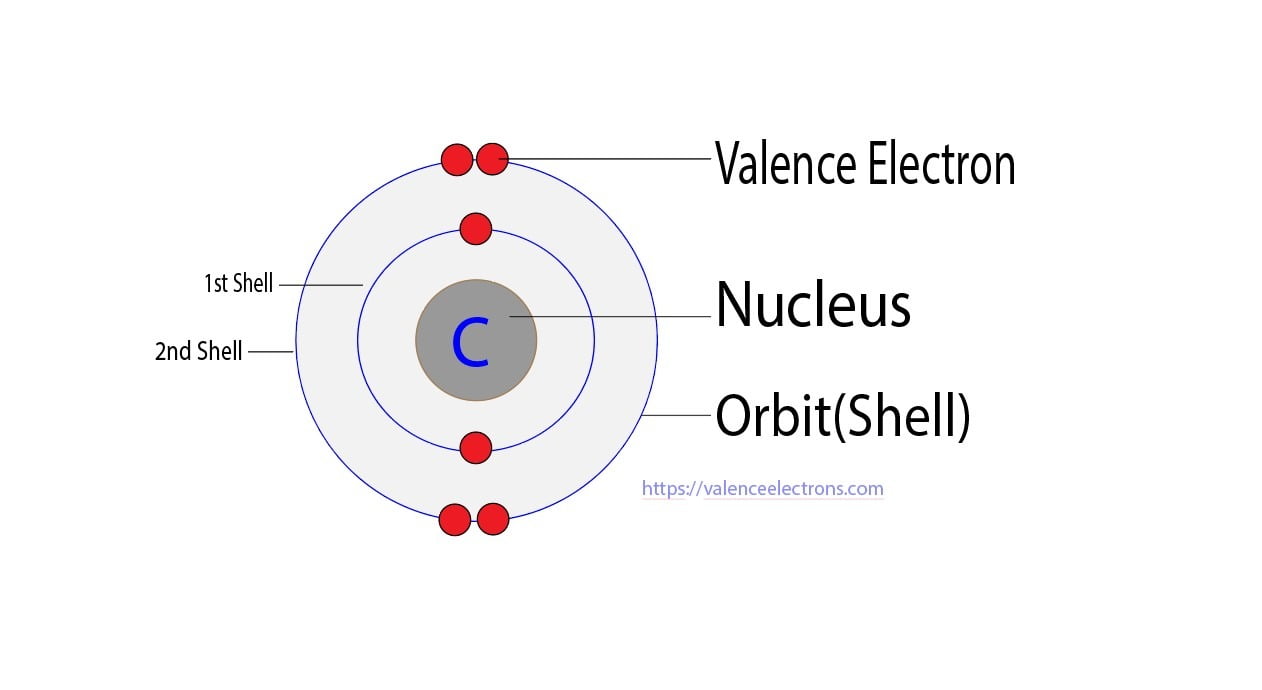
How to Find the Valence Electrons for Carbon Disulfide?
Carbon has an atomic number of six (meaning six protons, and six electrons as well in a neutral atom), so the first two electrons fill the inner shell and the remaining four are left in the second shell, which is the valence (outermost) shell.
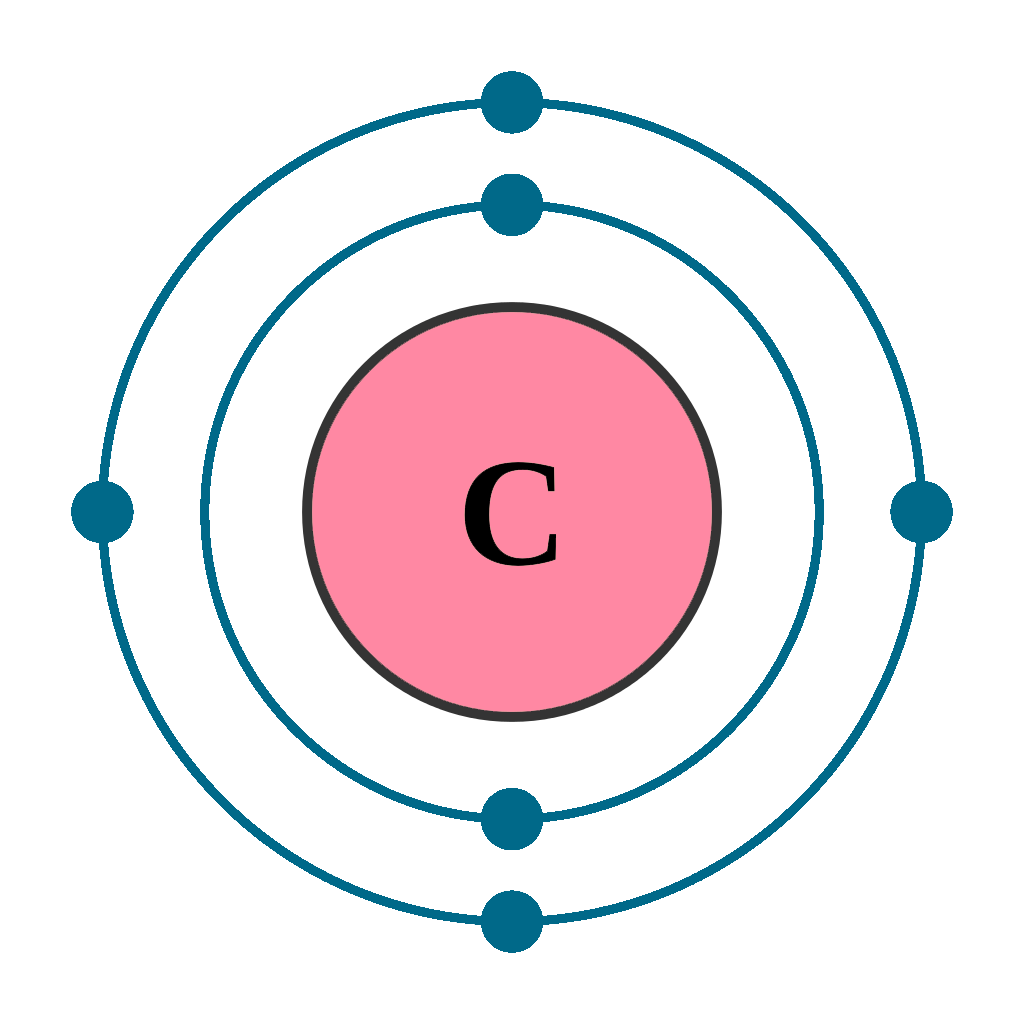
Carbon Element With Reaction, Properties, Uses, & Price Periodic Table
Valence electrons are the electrons present in the outermost shell of an atom. You can easily determine the number of valence electrons an atom can have by looking at its Group in the periodic table. For example, atoms in Groups 1 and 2 have 1 and 2 valence electrons, respectively. Atoms in Groups 13 and 18 have 3 and 8 valence electrons.

[Class 10 Chemistry] What is Carbon and its compounds? Teachoo
For example, silicon is in Group IVA (Group 14), so each atom would have four valence electrons. Chlorine is in Group VIIA (Group 17), so it would have seven valence electrons. Calcium would have two valence electrons, since it is in Group IIA (Group 2). Helium is the only exception for the main group elements. The first energy level holds a.

How Many Valence Electrons Does Carbon have? Explain With Different Methods?
Explanation: To find how many valence electrons are in an atom, you can look at the periodic table: Look at the writing above each Group, or column. The number next to the "A" is the number of valence electrons in an atom of an element in that Group. Carbon is in Group 4A, so it has 4 valence electrons. Answer link

5 Steps】How Many Valence Electrons Does Carbon Have?Number of Valence Electrons in Carbon
About Transcript How to determine the number of valence electrons and draw Lewis structures for main group elements starting from the electron configuration. Created by Jay. Questions Tips & Thanks Want to join the conversation? Sort by: Top Voted Manahil Ahmed 9 years ago If helium is in group 8 why does it not have 8 valence electrons .

PPT Introduction to Mass Spectrometry PowerPoint Presentation, free download ID1273270
Valence electrons are the electrons in the outermost shell, or energy level, of an atom. For example, oxygen has six valence electrons, two in the 2s subshell and four in the 2p subshell. We can write the configuration of oxygen's valence electrons as 2s²2p⁴. Created by Sal Khan. Questions Tips & Thanks Want to join the conversation? Sort by: